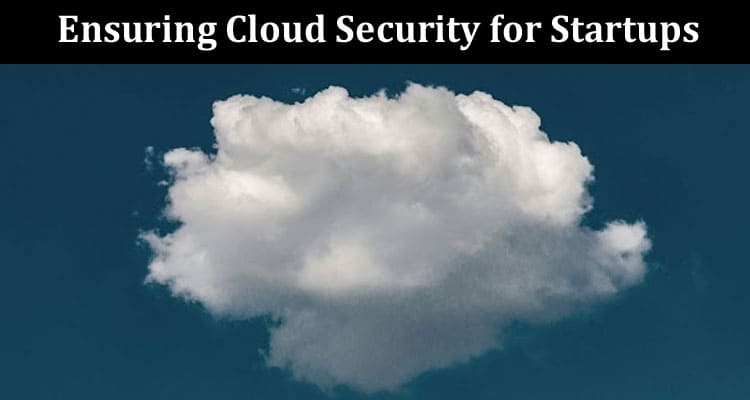In an era where startups increasingly rely on cloud services to power their operations and innovations, ensuring robust security measures has become paramount. The shift to the cloud brings undeniable benefits, such as scalability, cost-effectiveness, and flexibility, but it also introduces new challenges and risks, particularly in terms of cybersecurity. This article delves into the key considerations and tools that startups must prioritize to guarantee the security of their data and applications in the cloud.
Understanding the Cloud Security Landscape
Before diving into specific considerations and tools, it’s crucial to grasp the unique aspects of cloud security. Unlike traditional on-premises infrastructure, cloud environments involve shared responsibility between the cloud service provider (CSP) and the startup itself. While CSPs ensure the security of the cloud infrastructure, startups are responsible for securing their data, applications, and configurations within the cloud.
By the way, Joi developers play a pivotal role in ensuring the seamless integration of robust security measures, making them essential assets for startups navigating the intricate landscape of cloud security. For those seeking skilled Joi developers, explore opportunities at https://lemon.io/tech-stacks/joi/.
1. Identity and Access Management (IAM)
A robust IAM strategy is the cornerstone of cloud security. Startups should implement strict access controls, ensuring that only authorized personnel can access sensitive resources. Multi-factor authentication (MFA) is a simple yet powerful tool to add an extra layer of protection, requiring users to verify their identity through multiple means.
IAM tools, such as AWS Identity and Access Management, Azure Active Directory, or Google Cloud Identity and Access Management, enable startups to define and manage user permissions, reducing the risk of unauthorized access.
2. Encryption for Data at Rest and in Transit
Encrypting data is a fundamental practice to protect it from unauthorized access. Startups should implement encryption for data both at rest and in transit. Cloud providers typically offer native encryption services, such as AWS Key Management Service (KMS), Azure Storage Service Encryption, or Google Cloud Key Management Service.
By encrypting sensitive information, startups ensure that even if unauthorized access occurs, the data remains unreadable and unusable without the appropriate decryption keys.
3. Regular Security Audits and Compliance Checks
Conducting regular security audits and compliance checks is crucial for identifying vulnerabilities and ensuring adherence to industry regulations. Startups should employ tools like AWS Config, Azure Policy, or Google Cloud Security Command Center to monitor and assess their cloud infrastructure’s compliance with security policies.
Additionally, startups must stay informed about industry-specific compliance requirements and standards to avoid regulatory pitfalls that could hinder their growth.
4. Network Security and Segmentation
Implementing robust network security measures is essential to protect against external threats. Startups should employ firewalls, intrusion detection and prevention systems, and virtual private networks (VPNs) to secure their cloud network infrastructure.
Network segmentation is another critical aspect. By dividing the network into smaller segments, startups can minimize the potential impact of a security breach, preventing lateral movement within the infrastructure.
5. Continuous Monitoring and Incident Response
In the dynamic landscape of cybersecurity, continuous monitoring is crucial for detecting and responding to security incidents promptly. Startups should leverage tools like AWS CloudWatch, Azure Monitor, or Google Cloud Operations Suite to monitor their cloud environment in real-time.
Developing a robust incident response plan is equally important. This plan should outline the steps to be taken in the event of a security incident, ensuring a swift and effective response to minimize potential damage.
6. Cloud Security Posture Management (CSPM)
Cloud Security Posture Management tools enable startups to continuously assess and remediate security risks in their cloud infrastructure. These tools, such as AWS Security Hub, Azure Security Center, or Google Cloud Security Command Center, provide a centralized view of security posture, identify misconfigurations, and offer recommendations for improvement.
By utilizing CSPM tools, startups can proactively address security vulnerabilities before they can be exploited by malicious actors.
7. Employee Training and Awareness Programs
While advanced tools are essential, the human factor remains a significant element in cloud security. Startups should invest in employee training and awareness programs to educate staff about security best practices, social engineering threats, and the importance of maintaining a security-conscious mindset.
Educated employees become the first line of defense against potential security breaches, reducing the likelihood of falling victim to common tactics like phishing attacks.
Closure
As startups increasingly embrace the benefits of cloud computing, the need for robust security measures has never been more critical. By understanding the shared responsibility model, implementing effective IAM strategies, leveraging encryption, conducting regular audits, securing networks, and investing in employee training, startups can fortify their cloud security posture.
Furthermore, the adoption of advanced tools like CSPM solutions, continuous monitoring, and incident response plans ensures that startups can navigate the complexities of the cloud security landscape with confidence. Ultimately, a comprehensive approach to cloud security not only safeguards sensitive data but also fosters trust among stakeholders, paving the way for sustained growth and success in the competitive startup ecosystem.


